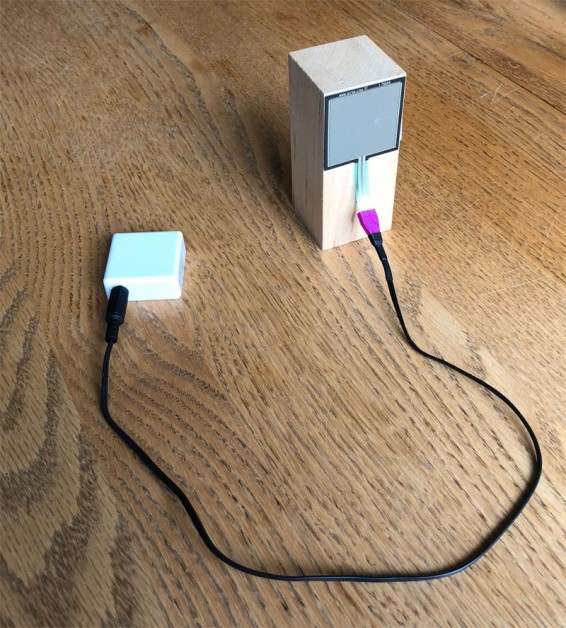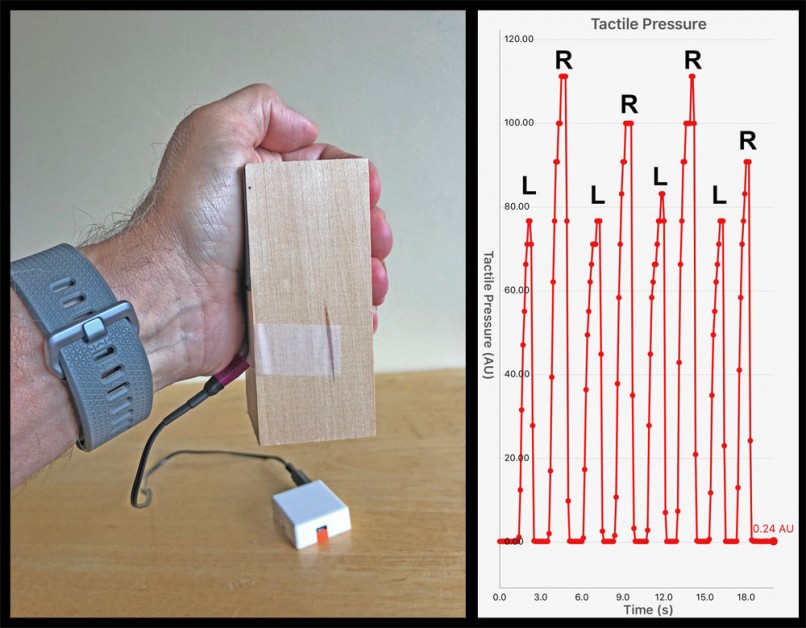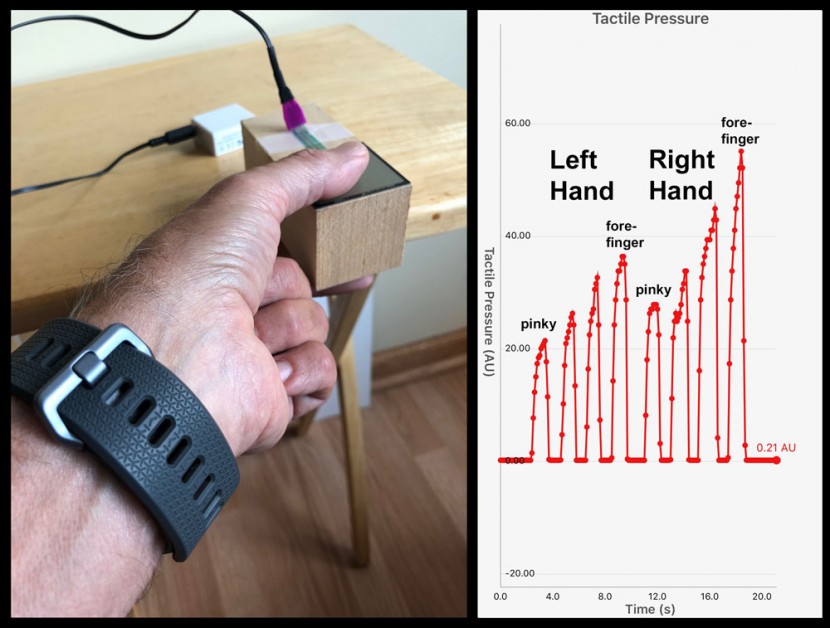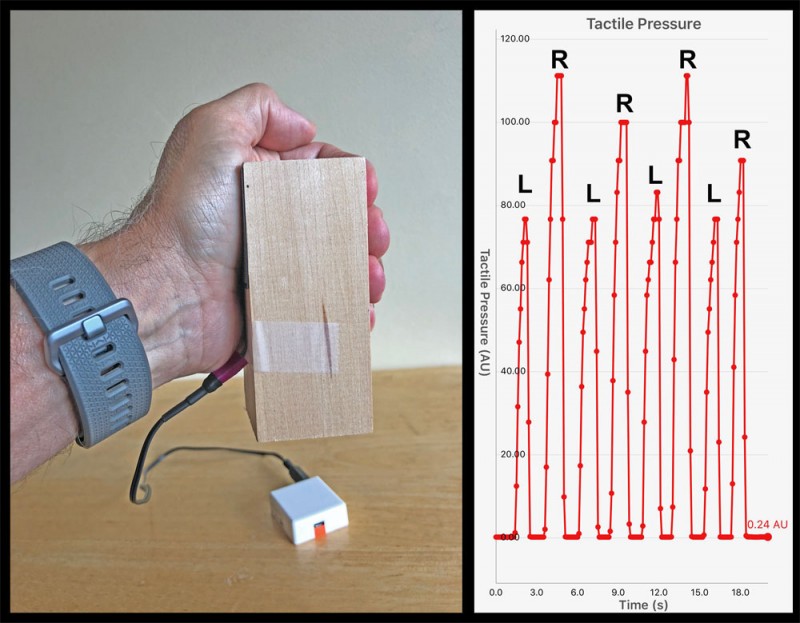A PocketLab Voyager Hand Dynamometer
Hand and finger strength is vital in many aspects of life--from sports such as rock climbing to jobs including airline baggage workers. PocketLab Voyager's tactile sensor can be used to construct a very simple hand dynamometer to measure strength of a person's hands and fingers. Figure 1 shows a simple dynamometer constructed by the author. It consists of a 2" x 2" x 4" block of wood to which the PocketLab tactile sensor has been attached using removable double stick poster tape.

Activity #1: Hand Grip Strength
A good first activity is to determine hand strength. The left side of Figure 2 shows the position of the hand on the dynamometer. The palm is placed on the tactile sensor with the fingers on the other side of the wood block. The wood block is held vertically off the table with the arm perpendicular to the body. The block is squeezed for a second or two, alternating with the left (L) and right (R) hand, without looking at the PocketLab app's real-time graph. The author is right-handed. Interesting enough, the right hand pressures are all higher than the left-hand pressures. Would the effect be reversed for someone who is left-dominant?
Are the results different for boys and girls? Are the results affected by the length of the hand? How about the age of a person? Are hand length and age mutually exclusive or related?

Activity #2: Finger Grip Strength
Now that we have investigated hand strength, let's turn to finger strength. The left side of Figure 3 shows the position of the thumb and forefinger when testing the strength of the forefinger. The thumb is placed on the tactile sensor, and the forefinger is placed on the opposite side of the wood block directly below the thumb. The dynamometer is then squeezed for a second or two. The process is repeated for each of the other three fingers--center finger, ring finger, and pinky. The entire process is then repeated for the other hand.
The strength of the fingers increases as we go from the pinky to the forefinger. This seems to agree with intuition. We also notice that the strength of the fingers in the right hand are all greater than the corresponding fingers in the left hand. This seems reasonable based upon what we found out regarding hand dominance in Activity 1. We could, of course, ask questions like we did in activity 1 regarding gender, hand length, and age. What other factors might affect finger or hand strength?

Acknowledgement
It must be mentioned that this lesson was motivated by similar studies developed by Vernier Software & Technology . If you want to measure the strength in Newtons rather than the arbitrary units (AU) of PocketLab's tactile sensor, Vernier's hand dynamometer is a perfect choice.
Additional Voyager Tactile Pressure Sensor Activities
Links to three additional tactile pressure sensor investigations are:
Heel Pressure: Running versus Walking

